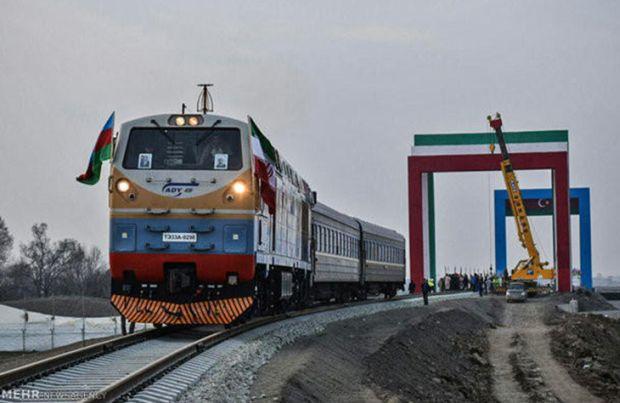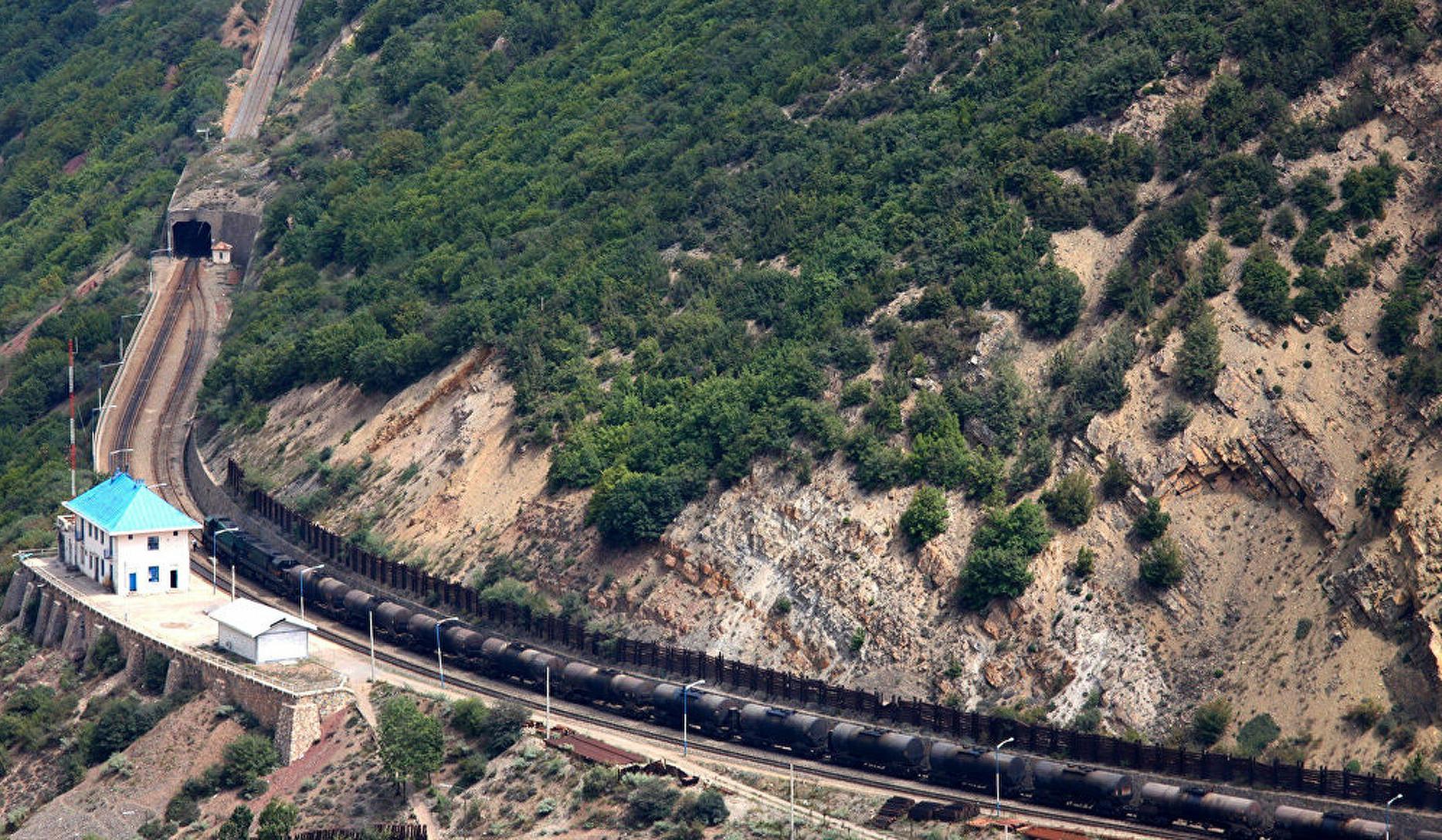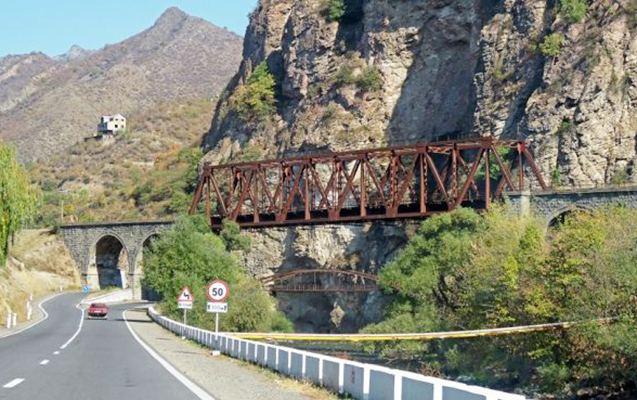Baku, Moscow, Tehran boost transit along North-South Corridor Analysis by Caliber.Az
Located at the intersection of the key transport arteries of the Eurasian region, Azerbaijan is fully involved in all logistics projects, actively contributing to their convergence. Recently, an Azerbaijani-Turkish-Georgian agreement on the exchange of information and simplification of transit customs procedures along the Baku-Tbilisi-Kars railway corridor was signed in Baku. And the day before, similar steps to optimise customs procedures were agreed upon in Tehran between Azerbaijan, Iran and Russia, which signed a memorandum on facilitating the transit of goods along the North-South International Transport Corridor (ITC).

The global importance of the transport potential of the South Caucasus has significantly increased against the background of recent geopolitical changes related to the war in Ukraine. Today, Azerbaijan's European partners are switching to the Middle Corridor routes, the implementation of which has become impossible due to the sanctions imposed on Russia. Most European cargo carriers have curtailed cooperation with the Russian Railways (RR), as well as with Russian ports in the Baltic and Black Seas. In turn, Türkiye and Central Asian countries have already transferred a significant part of the cargo to the Silk Road, including the part of transit that in the past went along the Northern Corridor through the territory of the Russian Federation. Even China, which has not joined the Western sanctions, intends to reduce the transportation of goods through Russia in order to protect its exporters from international sanctions. At the same time, Beijing is additionally increasing the volume of transhipment (we are talking about tens of millions of tons of cargo) along several combined rail and sea routes through the countries of Central Asia, the South Caucasus and further to Europe. Moreover, along with the Baku-Tbilisi-Kars (BTK) railway corridor, transhipment through the Black Sea ports of Georgia and further to Romania, Hungary, Slovakia, the Czech Republic with the final point in Mannheim, Germany, will be actively used.
At the same time, the noticeably increased load on the Caspian ports – Aktau and Alat within the framework of the Trans-Caspian International Transport Route (TITR), as well as the need to increase the share of rail transport (today road transport prevails) through the "steel" BTK highway encourages participants to urgently solve the problem of bottlenecks in the infrastructure of the transport corridor, simplify cross-border and customs procedures, expand the exchange of digital information on transit operations. In this regard, a corresponding agreement was signed last Friday between the relevant departments of Türkiye, Azerbaijan and Georgia.
However, despite the increased sanctions pressure on Russia and the actual cessation of trade with the countries of Scandinavia and Northern Europe, cargo carriers from the Russian Federation do not intend to curtail trade cooperation with neighbouring countries, on the contrary, they are making efforts to transfer cargo flow to the south, in the direction of Iran, Persian Gulf ports and India. The optimal land corridor in this direction passes through Azerbaijan, which opens a window of opportunity for a multiple expansion of cargo transit along the North-South corridor. Transhipment of cargo along this route (from the Baltic harbours of the Russian Federation to the Indian port of Mumbai) with a length of about 7,000 kilometres takes about three weeks and reduces transportation costs by 30 per cent relative to a long sea route. According to Alexander Karavaev, a Russian expert and researcher at the Institute of Economics of the Russian Academy of Sciences, in the current conditions, Azerbaijan has significantly strengthened its position as a regional transit bridge for bringing Russian products to international markets. First of all, we are talking about the markets of the Persian Gulf countries, Iran, India, Pakistan, other Asian countries, etc.
However, unlike the routes of the Middle Corridor, the transport infrastructure of the North-South Corridor has not yet been fully formed: despite the fact that in March 2019, the construction of the 175-kilometre section of the Gazvin-Rasht railway was completed in Iran, the 164-km Rasht-Astara segment has not yet been completed. This circumstance hinders the unification of the Ardabil railway with Azerbaijan's railways and the full functioning of the North-South Corridor. In recent years, cargo transhipment on this section has been carried out through a combined railway-automobile scheme with the transhipment of wagons in Astara to heavy trucks, which, of course, slows down traffic, reducing the profitability of transportation. Nevertheless, even in such a truncated version, the corridor is actively being developed by cargo carriers: for example, in pre-crisis 2019, the transhipment of cargo (including transit from the Russian Federation) in Astara was about 4.5-5 million tonnes, increasing by a quarter by 2021. Within the framework of the existing infrastructure, this cargo flow can be increased to about 7-8 million tonnes per year. And after the construction of the railway from Rasht to Astara, the cargo flow in the first stages can be increased by an additional 10-15 million tonnes.
Last year, in order to expand the ITC capabilities, the construction of a new road bridge on the border has begun, which will connect the Baku-Astara highway with the Ardabil -Astara-Rasht highway. However, the construction of the railway terminal in the Iranian Astara is still not fully completed, and the largest grain terminal in Azerbaijan, AstaraGrainTerminal, with a capacity of over 0.5 million tonnes of grain per year has not yet been commissioned (the terminal was almost completed in 2019, but the final work was delayed due to the pandemic).

The completion of all these projects is especially relevant today, given Russia's need for access to a sanctions-free transport corridor. Until recently, the basis of Russian transit was mainly wood, building materials, grain, and taking into account the sanctions pressure in the reverse direction, it is planned to establish supplies of Iranian and Indian goods to the Russian Federation – food, consumer goods, chemical products, cars, as well as cargo from the UAE and other trade hubs of the Persian Gulf region and Southeast Asian countries.
To this end, Russia intends to allocate $1.5 billion to expand the ITC infrastructure. In recent months, Iran has also repeatedly voiced its readiness to complete transport communications and expand the capacity of terminals on its territory. However, this work requires operational steps, otherwise, a "bottleneck" effect may occur in Iran's Astara, when, with a relatively developed infrastructure on the Azerbaijani territory, increasing volumes of cargo delivered will accumulate at the border due to the lack of the necessary capacities of terminals and road junctions in Iran.
Equally important are the efforts of the parties to the ITC agreement to unify legislation, administrative mechanisms and other cross-border and customs regulations and rules in order to accelerate and simplify transit cargo traffic. On this occasion, the heads of the Azerbaijani, Russian, and Iranian customs agencies signed a memorandum last Monday [August 15] in Tehran on facilitating the transit of goods through customs procedures. According to the memorandum, the parties intend to expand the use of the electronic information exchange system, in conjunction with which a special tripartite committee will be formed.
Commenting on the results of the Tehran meeting, Iranian Ambassador to Azerbaijan Seyed Abbas Mousavi noted on his Twitter page the importance of the signed memorandum on customs convergence for a breakthrough in Iran's foreign trade. The ambassador stressed that India's accession to this mechanism further stimulates the development of the North-South Corridor. According to Mousavi, during the talks in Tehran, the prospects of accelerating the construction of a railway terminal and the implementation of new border bridge projects were touched upon, and in this regard, a meeting between Iran's roads and urban development minister and Azerbaijan's digital development and transport minister is scheduled in the near future.

It should be noted here that in parallel with the development of transport infrastructure in border Astara, as well as in Baku and Tehran, they are preparing to implement another transport alternative – laying a cross-border section of the Zangazur corridor. As a result of the 15th meeting of the Azerbaijani-Iranian intergovernmental commission, a memorandum of understanding was signed on March 11, 2022, providing for the establishment of a transport link between Azerbaijan's East Zangazur Economic Region and the Nakhchivan Autonomous Republic via Iranian territory. In particular, it is planned to build a 55-km-long highway, as well as the Imishli (Azerbaijan) - Parsabad (Iran) railway line parallel to it. Taking into account the high pace of laying the 110.4-km Horadiz-Aghband railway line, the construction of which is scheduled to be completed by late 2023, the North-South Corridor may soon have another alternative junction with Iranian railway communications through the junction in Nakhchivan's Julfa.








